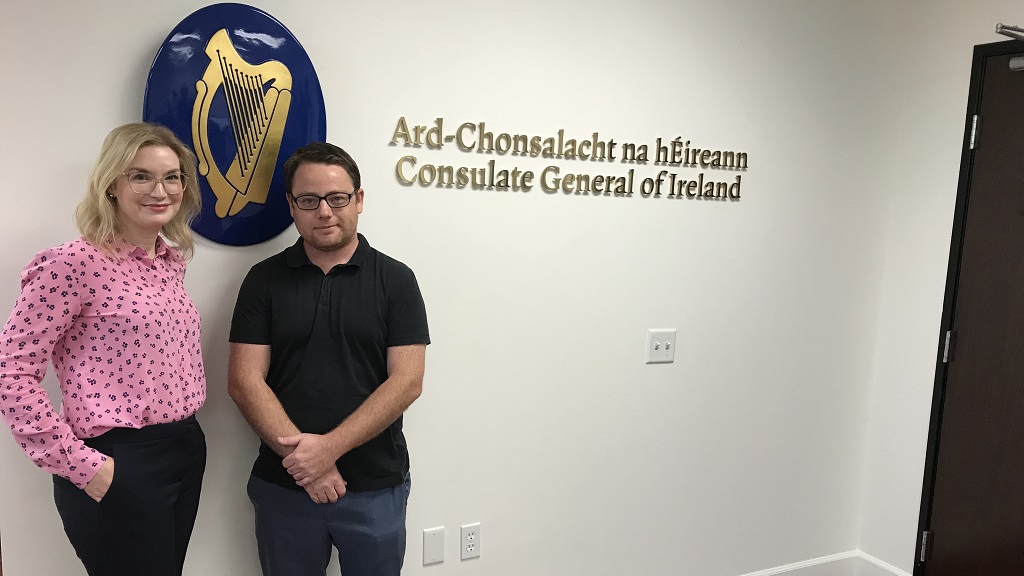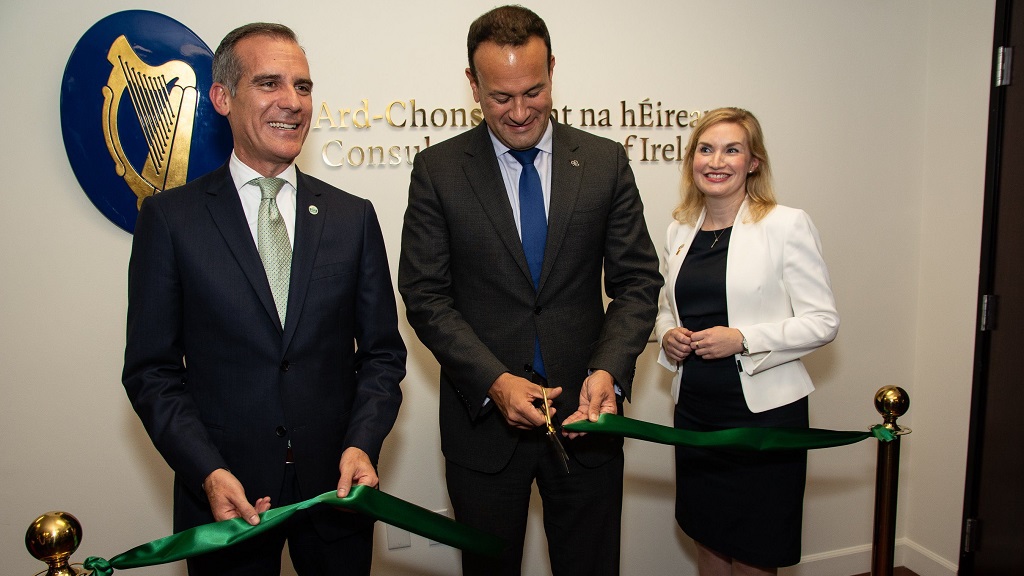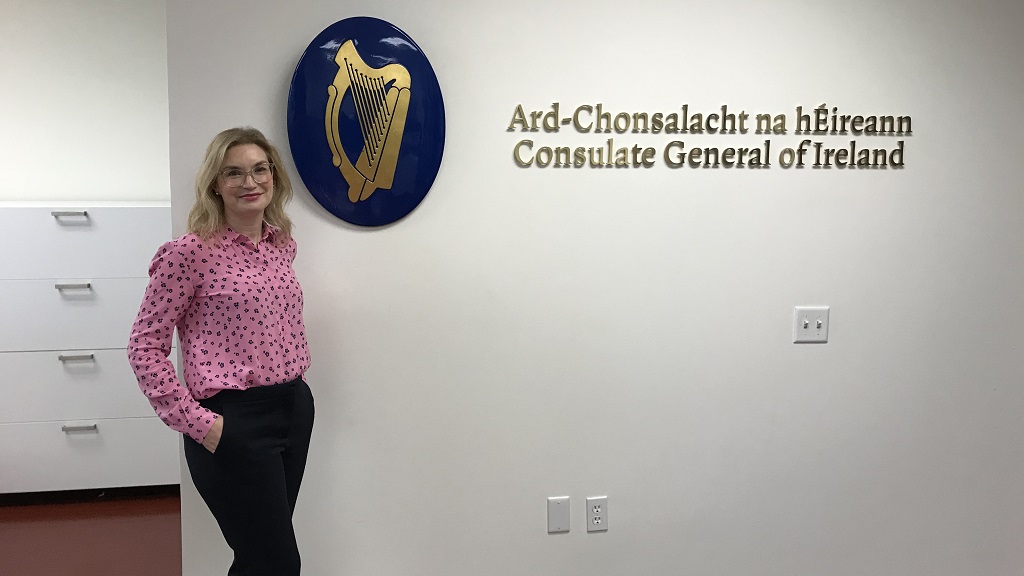Exploring the Threats and Opportunities of Cyber Diplomacy at PolicyWest
Cybersecurity, the digital revolution, and the evolving roles of Silicon Valley and the U.S. government in national security and technology were all major and recurring themes at PolicyWest, Justin Chapman wrote in USC’s Public Diplomacy Magazine.
By Justin Chapman, Pacific Council on International Policy, 12/24/3019
As the world undergoes the Fourth Industrial Revolution, foreign governments and publics are becoming intertwined and interdependent like never before. What does this mean for diplomacy and international relations going forward? What role can public diplomacy play in this evolving dynamic?
Klaus Schwab, founder and executive chairman of the World Economic Forum, first introduced the term “Fourth Industrial Revolution” in a Foreign Affairs article in December 2015. While the Third Industrial Revolution encompasses the digital revolution, the Fourth Industrial Revolution is characterized by “a fusion of technologies that is blurring the lines between the physical, digital, and biological spheres,” Schwab wrote.
Those disruptive technologies include the internet of things, virtual and augmented reality, artificial intelligence, robotics, autonomous vehicles, 3-D printing, nanotechnology, biotechnology, energy storage, and quantum computing, among others.
Cybersecurity, the digital revolution, and the evolving roles of Silicon Valley and the U.S. government in national security and technology were all major and recurring themes at the Pacific Council on International Policy’s annual global affairs conference, PolicyWest.
Cybersecurity, the digital revolution, and the evolving roles of Silicon Valley and the U.S. government in national security and technology were all major and recurring themes at the Pacific Council on International Policy’s annual global affairs conference, PolicyWest. The event was held on October 4, 2019, in Beverly Hills, California, and featured a keynote discussion on Ukraine, a debate on defense spending, and several panels of experts discussing the most pressing global issues of our time.
Glenn Gerstell, general counsel for the National Security Agency (NSA) and Central Security Service (CSS), delivered a TED-style talk on the Fourth Industrial Revolution. He implored the private sector to work with the U.S. government to help confront the growing cyber threats from the United States’ adversaries.
“Is there a danger that we will underestimate and thus not be prepared for the impact of technology? This is an unacceptable risk in the area of national security,” he said. “The digital revolution will present many benefits in the way we work, communicate with friends and family, shop, and travel. But it also presents risks and threats to the fundamental duty of government: to keep us safe and secure. We must be able to understand and stay ahead of the technological progress of our adversaries, whether they’re other countries, terrorists, or common criminals. This is not an area where we can play catch up.”
The cyber world exploits a unique gap in responsibility, and that that responsibility as well as technological capability is shifting from government to the private sector.
He said technological development is going to alter the balance between the private sector and the federal government in terms of responsibilities and capabilities relevant to national security. This is not just a domestic issue, considering the seemingly unstoppable influence of multinational corporations. Gerstell argued that the private sector has more data, increasingly more social responsibilities, and is directly exposed to the threat posed by a rising China.
“For the first time since the United States became a global power, it must now confront an adversary that presents not just a political or military threat, but also a fundamentally economic one,” he said. “But in this economic area, the playing field is not even. It’s our private sector that will bear the brunt of the effects of a cohesive, competitive China.”
He also argued that the cyber world exploits a unique gap in responsibility, and that that responsibility as well as technological capability is shifting from government to the private sector.
In the 20th century, he pointed out, “it was government that led the way in technological development and had the expertise, and it was often the private sector that was trying to learn from it and catch up with government. Now, in many critical areas, that’s exactly switched 180 degrees and we see that it’s the private sector that has a much greater level of technical capability, is spending billions of dollars on research and development, and has the expertise in key areas.”
The United States cannot confront the likes of China and Russia—who are quickly gaining ground in terms of cyber capabilities—on its own.
He posed the question: How must we adapt to this altered balance to achieve our goal of national security?
He called for the “melding together of the relative strengths and positions of the two sectors. Perhaps the best way to do that is through new or deeper public-private partnerships in figuring out how to handle data, collaborating to combat cyber malevolence, and confronting China in an integrated way.”
The only way that is possible is if the U.S. government articulates a consistent policy regarding China and communicates that policy to its allies and their publics around the world. Like previous growing adversaries, the United States cannot confront the likes of China and Russia—who are quickly gaining ground in terms of cyber capabilities—on its own. It needs to win the hearts and minds of Europeans, Africans, South Americans, and Central, South, and Southeast Asians, to name a few major players in this sphere. In other words, it needs to change course.
In a disheartening and potentially dangerous trend, the Trump administration has been dismantling existing cybersecurity protections put into place by the Obama administration. According to a recent Axios article, “at least a dozen top or high-level [White House] officials have resigned or been pushed out of a cybersecurity mission that was established under Barack Obama to protect the White House from Russian hacking and other threats.”
As American democracy falters, so too does the image of the United States in the eyes of the world, making the job of the public diplomat that much more difficult and elusive.
Not to mention the cybersecurity threats to our elections, only increasing and becoming more sophisticated as we round the bend to 2020.
The Trump administration has done virtually nothing to prevent another intrusion into our elections by Russia or anyone else. As American democracy falters, so too does the image of the United States in the eyes of the world, making the job of the public diplomat that much more difficult and elusive.
At PolicyWest, Antonio Mugica, CEO of Smartmatic, a company that specializes in technology solutions for electronic voting systems, said our society’s failure to catch up with election technology is “shameful” and has “caused a lot of confusion.”
He suggested the United States learn from the small Baltic nation of Estonia, which doubled down on and strengthened financial and election security through technology after a devastating cyber-attack from neighboring Russia in 2007.
There are countless tools for today’s public diplomats to utilize in cyberspace in order to articulate U.S. foreign policy objectives to international audiences, strengthen relationships between the American people and publics around the world, and exchange and celebrate diverse cultures.
During a panel at PolicyWest on the intersection of Silicon Valley and national security, Sarah Sewall, executive vice president of policy at In-Q-Tel, a not-for-profit venture capital firm, said the questions we are facing today about technology combine “the hard security pieces with the human rights and values pieces.”
“When we think about the changing nature of power, what undergirds the United States’ ability to be a leading power in the globe and a force for good, we’re seeing a shift in the sources of that power toward technology,” she continued. “Technology is becoming the currency in which power is accrued and exercised. Who is going to be the most innovative and advanced in not just thinking about AI but adopting and using and implementing AI?
Who’s going to own the biotech revolution, which has the ability to transform everything? Some of the United States’ adversaries have the view that this is the race for global leadership and power.”
Public diplomats have unprecedented opportunities to reach a virtually limitless audience around the world. But they also need to stay vigilant against the threats posed by technology.
Because of these advances in technology, public diplomats have unprecedented opportunities to reach a virtually limitless audience around the world. But they also need to stay vigilant against the threats posed by technology: facial recognition, deep-fakes, lifelike online bots, machine learning, and automated microtargeting, to name a few, all have unprecedented pros and terrifying cons.
And they also shouldn’t forget the lessons of the past. There are some foundational elements of public diplomacy that reliably work no matter the medium, such as listening and approaching cultural relations in a cooperative, rather than self-interested, manner. The long-lasting impact and reach of soft power should not be underestimated.
There are countless tools for today’s public diplomats to utilize in cyberspace in order to articulate U.S. foreign policy objectives to international audiences, strengthen relationships between the American people and publics around the world, and exchange and celebrate diverse cultures. Virtual exchanges, digital broadcasting, and e-sports—in addition to social media and multimedia—are all areas that have a lot of potential for achieving public diplomacy objectives.
The U.S. government must make its own cybersecurity and that of the private sector—as well as U.S. allies—a top priority again. If the tenor of the discussions at PolicyWest are any indication, we’re not there yet.
But first, the U.S. government must make its own cybersecurity and that of the private sector—as well as U.S. allies—a top priority again.
If the tenor of the discussions at PolicyWest are any indication, we’re not there yet.
__________________
Justin Chapman is the Communications Officer at the Pacific Council on International Policy.
This article was originally published in the winter 2019 issue of USC’s Public Diplomacy Magazine.
Learn more about PolicyWest 2019; watch the keynote discussion on Ukraine and TED-style talks on LA and international trade, election security, climate change, and the Fourth Industrial Revolution; and read a summary of the debate on defense spending, cybersecurity discussions, and other insights. Check out more photos from the conference on our Flickr page.
The views and opinions expressed in the pieces above are those of the author and speakers and do not necessarily reflect the official policy or position of the Pacific Council.












